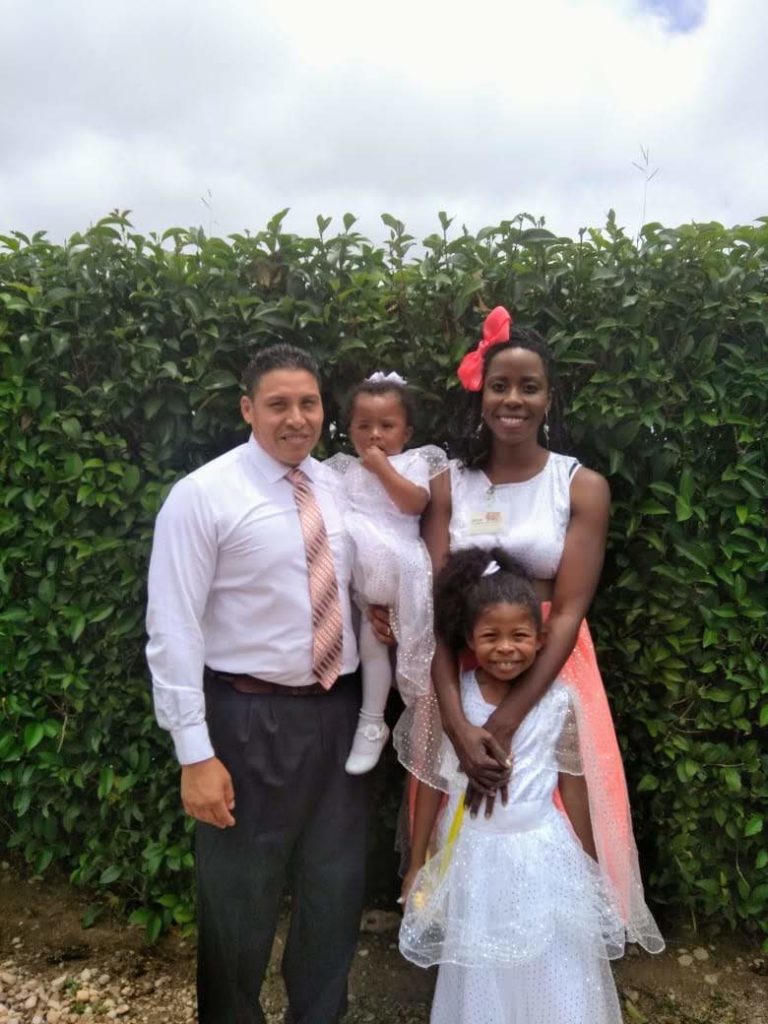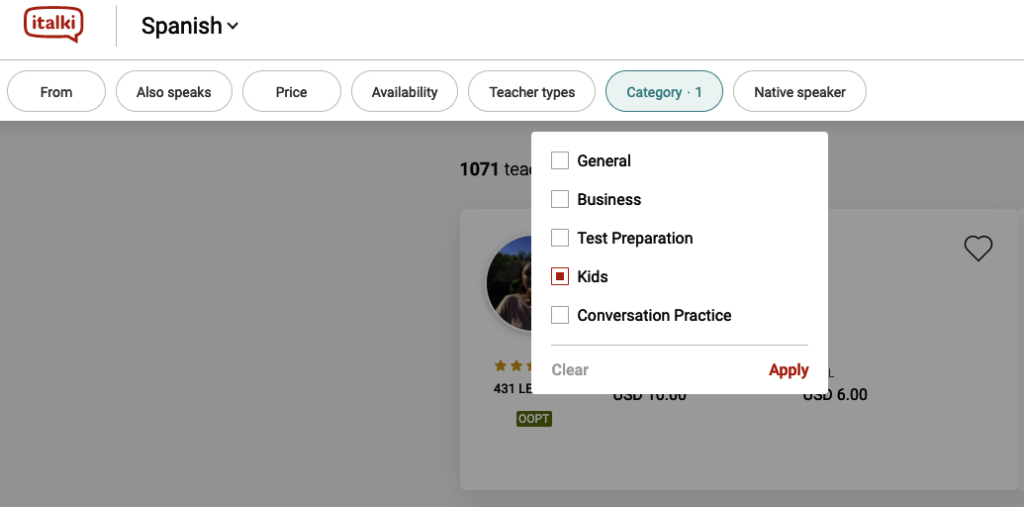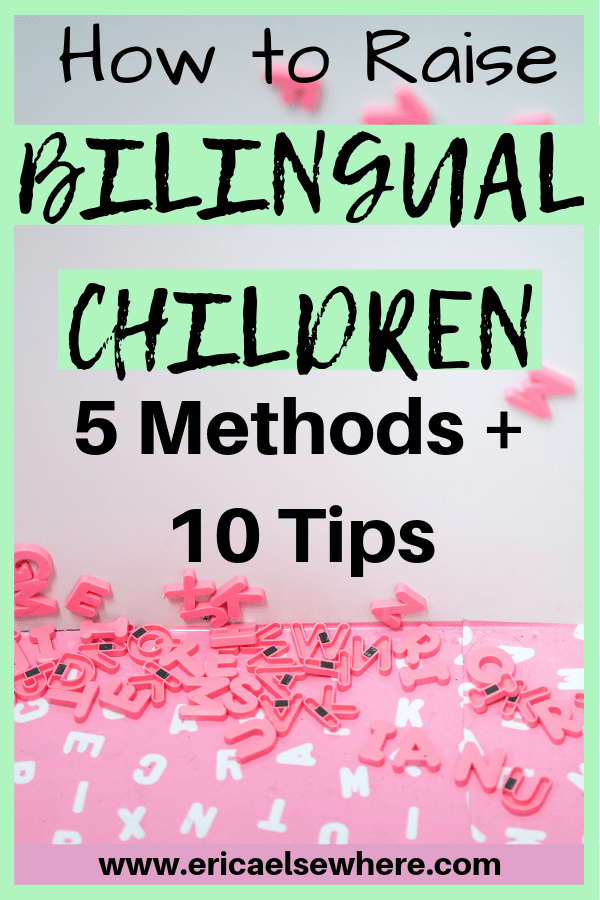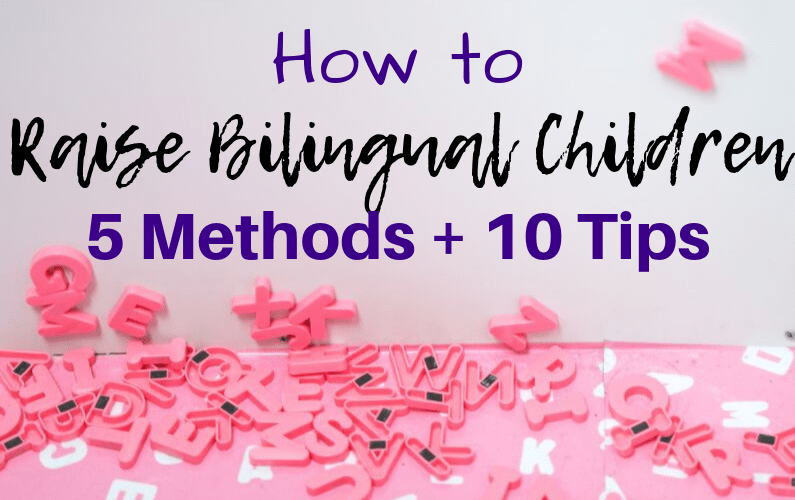Bilingualism or multilingualism. Many of us desire it. Even more of us want it for our children. But is raising bilingual children worth the effort?
The cognitive benefits of bilingualism are indisputable. Bilingual kids’ brains have been linked with advanced skills in attention and executive function.
Bilingual children have more than one way to express themselves. They grow up to have social advantages and a highly desirable skill in the business world due to their ability to communicate with more people around the globe.
But how can you make this a reality for your children? Are you a bi-cultural or immigrant family having a hard time trying to get your children to speak your native tongue?
Or does your family only speak English but you’re interested in learning another language together and giving your children a jumpstart in the process?
Regardless of your circumstances, bilingualism is possible for your children.
As the mother of a fully bilingual (English/Spanish) 6-year old and an almost 2-year old who we are also raising to be bilingual, I have a few tips to share.
This post contains affiliate links (at no additional charge to you), meaning that I may earn a commission if you make a purchase. Read my full disclosure here.
A Snapshot of our Bilingual Family

I am a native English speaker from the U.S. I began to learn Spanish as a teenager and became fully bilingual a few years later. My husband is a native Spanish speaker from Mexico. He does fine with his English, but speaks mostly Spanish.
Our first daughter was born in the U.S. but we moved to Mexico when she was 10 months old. Our second daughter was born in Mexico. During most of our time in Mexico, we’ve had a Spanish-speaking babysitter who spends several hours a day with the children.
Our oldest has always spoken both languages. She began to speak early and eloquently. She’s fluent in both languages and she doesn’t speak one better than the other. They are both her first languages.
We are in a similar process with our youngest, who is almost 2. Although of course children are different and we have yet to see how her languages develop, so far she speaks words and phrases in both languages, as we would expect.
How We Raised (are Raising) Bilingual Children
As you can see, we had a bit of an advantage since both languages have always been spoken in our household. However, it’s important not to make the assumption that this type of household structure automatically leads to bilingual children. It’s very easy for that not to happen if you don’t pay attention.
In our case, my children have grown up in Mexico, they have a Mexican father, and Mexican babysitter. Although my native language is English, due to my complete immersion with Spanish all these years, it honestly makes no difference to me which language I speak in most cases and I’m usually not even aware of what language I’m speaking unless I’m paying attention.
I tend to want to respond in the language in which someone speaks to me and my brain naturally gravitates towards what I hear the most.
So my children could have easily grown up speaking very little English, but I was not about to let that happen.
When my oldest was little I made it my goal to speak to her mostly in English. Of course, using English exclusively with her would have been ideal, however, it was hard to control the urge to speak in Spanish sometimes. I probably spoke to her 80% in English and 20% in Spanish. Her dad would speak to her in Spanish and she would hear us speak to each other mostly in Spanish.
She turned out perfectly bilingual. These days she and I speak mostly English to each other, however, it really does not matter at this point. She converts from one language to the other with complete ease. At some point, while she was 2 years old, she started automatically speaking to me in English, then going and saying the same thing to her father in Spanish.
With my toddler, I am trying to be better about speaking to her exclusively in English when it is just us family. When we’re around other people who are involved in the conversation and speak no English I find it rather rude to speak in English so we just all speak Spanish. When I remember, I encourage my oldest to speak to her younger sister in English. Without the reminder, she speaks to her in either one.
I read to my children in both languages. I sing to my children in both languages. Bottom line, they’re exposed to both constantly.
My 6-year-old is just entering first grade and therefore working on her reading and writing in both languages. This was one of the many reasons that we opted for bilingual homeschooling beginning this year. Prior to this, she had been in a private preschool/kindergarten since she was 3 (kindergarten is 3 years long here in Mexico).
Although it was a lovely school there were major disadvantages when it came to English. The children have an English class, which involves learning basic English, which is obviously not needed by my children. Subjects in reading and writing and literature in English aren’t something that a local school here in Chiapas would be able to keep up with at the level that I require.
Being that her English teacher is non-native, when my daughter was 3-years-old and in her first year of “kindergarten”, she would sometimes come home speaking English with a Mexican accent. This would make us all (and even her) laugh when she realized it herself. Fortunately, she quickly corrected that herself and it was never an actual problem.
But now in first grade, homeschooling makes the most sense for our family.
Tried and True Methods for Raising Bilingual Children

Here are a few methods for raising bilingual children that have stood the test of time.
One Person One Language (OPOL)
This is the main method that we used to raise our children bilingually (again, still in the process with the little one).
This is just as it sounds. Each parent chooses which language they will speak to their children and tries to stick exclusively to that one. Often this is the native language of each parent, as it is in our case, but it doesn’t have to be.
Sometimes a parent has learned or is learning another language and has obtained enough fluency that he or she can communicate with their children in this new language that they desire their kids to learn.
The OPOL method sometimes creates a heavier burden on one parent than the other, depending on which is teaching the minority language (the language that is not spoken by the majority in the local area).
In the case of our family, my load is heavier to bear as we live in Mexico and English is the minority language of our surroundings. Therefore, I am the only English resource that my children have.
If you’re really strict with this method then you will speak to your children in your chosen language regardless of who else is around. But I am uncomfortable speaking English to my children when we are with others who don’t speak any English. I prefer for everyone to understand the conversation. Fortunately, as a work-at-home and now a homeschooling mom I have enough time at home with my children during the day to work on the OPOL method at other times without concerns.
You’ll definitely have to take a look at your circumstances and determine how strict you want to be with OPOL, but generally, the stricter the better.
Minority Language at Home
Again, by minority language, we mean the language that is less common in your surroundings based on where you live. For example, if you live in the U.S. and want your kids to learn Spanish then Spanish is the minority language and you will want to encourage Spanish-only at home.
The Minority Language at Home method works well when everyone in your house can speak and understand the minority language well. If you speak Spanish, for example, but your husband doesn’t know much Spanish, then this method would not be ideal because everyone in the house is supposed to be speaking the minority language at home all the time. That’s what differentiates this from the OPOL method.
With minority language at home, everyone is allowed to use the regional language outside of the home if they wish.
This method would not work for us personally because English is the minority language here. Although my husband speaks English he does not dominate it and definitely needs the opportunity to speak in Spanish to the children when he is conversing on the deeper aspects of life with them.
There’s no way that I would sacrifice emotional bonding between father and children for the sake of bilingualism when I know there are other methods that I can use.
Time and Place
This method involves setting a certain time or place to speak one language or the other.
For example, a family could determine that before 2pm they speak English and after 2pm they speak French.
Or another family may say that they speak English most of the day, but at the meal table, it’s Spanish only.
Still another family may decide that at school the children speak English but everywhere else they speak German.
The concern with the time and place method is that it can be a bit harder to remember than the other methods outlined above. It also has the potential to leave one language with much less exposure than another. But still, it has worked for many families.
Language Immersion Classes
Language immersion classes, in which children are taught their regular curriculum in two languages, can be an excellent option for many families. This is one of the best ways in which a monolingual family can still create a great amount of exposure to another language for their children.
The younger a child starts such a program the better. These programs have superior results when compared to a simple foreign language class at school because the children are exposed to the second language all day long as part of their everyday school life and grow up with it in a more natural way.
Move Abroad
Perhaps the most radical on this list, but speaking from experience, moving abroad can be one of the richest experiences children (and adults!) can have.
While granted, most don’t move with the sole purpose of learning a language or teaching a new language to their children (although some do!) language exposure is a wonderful opportunity that can come along with a relocation due to a job or another reason.
It doesn’t have to be a permanent move. A temporary relocation can provide a perfect opportunity for a new language and cultural immersion experience when done right.
Some parents have their children attend local schools in order to assist in language learning. And even those who choose to homeschool their children can find an endless source of socialization experiences to help their children progress in the new language.
Again, this is a really nice option for monolingual families, although it will definitely be most beneficial to the children if their family is also trying to learn the language right along with them.
10 Tips for Raising Bilingual Children

Now that you’ve chosen your method or methods, let me help you amp up your game with the following tips:
1. Educate yourself. Research what is normal for bilingual children language development based on their age. For example, if you’re raising a bilingual child from birth or from early in the toddler years, you’ll probably read that it’s normal for them to mix languages in the beginning and that this is no cause for alarm.
I’ve read that it’s also normal if bilingual children seem to be a bit behind their peers in speech and later in reading and writing, but then catch up. That definitely doesn’t prove true in all cases, but learning this may put your mind at ease.
After all, they are processing two languages! With consistent effort, the end result is that they will have a perfect grasp of speaking, reading, and writing in both languages, so who cares if it took them an extra year or two to get there!
In other cases, it may be quite the opposite and bilingual children may be advanced from the beginning. It may not be possible to determine if this is due to their nature or their bilingualism.
But in any case, reading about the processes of a child’s brain who is processing two languages is both fascinating as well as useful, as it will help you make decisions, have a few ideas of what to expect, and learn patience.
2. Use fun language learning resources! If your children are a bit older and did not naturally grow up speaking a second language it will be important to find fun ways for them to learn their second language!
I found a great resource called Foreign Languages for Kids by Kids. Currently, they have Spanish available and they’re working on Mandarin.
This award-winning program is based on skits performed by children entirely in the target language. In the Spanish video series, kids learn by seeing other kids model Spanish in day-to-day life. The storyline is humorous and engaging.
The more children you enroll the lower the membership cost, but one child currently only costs $10/month for an annual membership!
Click here to see some demo videos. You can also view demo workbooks and quizzes.
If you’re a monolingual family, it will be important to find fun ways for them to converse with another person in the language that you want them to learn. There are online programs, such as Italki, where you can use the search filter to find tutors who specialize in children and have all kinds of fun methods up their sleeves (puppets, songs, etc…)

This is a super-economical option. Click here to learn more about Italki.
3. Don’t expect them to learn from the TV or other media alone. Expose them to real-life conversation. Ideally, this conversation will come from you, your partner, or another family member that they have daily contact with.
If you do not speak the language that you want your children to learn, one of the best gifts that you can give them is to try to learn yourself right along with them and practice with them. Even if you have a head start, know that being children, they will probably catch up to you and pass you very soon in learning the language. But your example can be just the motivation they need to try themselves!
If you’re interested in learning Spanish as an adult, read my article here. You can also take a FREE 7-day Spanish class here to see if my most recommended program for adult learners, Rocket Languages, is a good fit for you!
Another option is to sign them up for conversational-type classes with a real human tutor online, as we’ve mentioned above.
Whatever you do, understand that they need human interaction to actually learn a language to fluency. But DO use technology as a tool! A reasonable amount of shows, games, etc…can help to reinforce the language or languages they are learning.
4. Incorporate music. Songs and music have a powerful effect on the brain’s ability to retain information. Exposing your children to fun songs in the minority language will help them learn.
5. Read to your children in both languages and make sure they have access to books in both languages. Reading to your children has numerous benefits and reading to them in two languages has even more.
Many children enjoy hearing familiar stories presented in a different way. You can use bilingual books for this purpose or you can simply have a collection of books in both languages. You can find a list of some of my book recommendations for young children here.
A special bonding can occur with your child when you read to them in your native language, especially if yours is the minority language where you live. I love reading to my children in English, especially the familiar books from my childhood.
6. Include culture studies in your teaching to spark interest. If your child is having trouble accepting the need to speak in the minority language (or even if he isn’t!) teaching your child about the people and places and history of that language can go a long way in helping them to understand that it’s important.
It can be hard for a child to connect with a language when he doesn’t hear anyone else speaking it except his parents (or a parent). Use books, videos, and other tools so that the child understands that this is a real language, and that knowing it will open up more possibilities for him in the future.
7. Travel if you can. This goes along with the previous point. Even if you cannot live abroad, traveling to your home country or a country where the minority language in your area is spoken can be a huge benefit to the child. While a short trip may not be enough to help with language immersion in itself, it certainly will help the child to see the people, places, and culture associated with the language and may increase his motivation for learning it.
8. Teach them how to read both languages from the start, if possible. Some languages will be easier to teach your kids to read than others, depending on what other languages they are fluent in.
For example, Spanish is an easy language to learn to read for a native English speaker as it shares our alphabet but has way fewer phonemes (unique sounds) that are possible to produce in the language. It’s a very phonetic language. I learned to read Spanish well at 13-years-old before I could even speak it fluently simply because the rules for reading Spanish are set and clear, unlike English.
Many children do well with learning to read two languages at once. But even if you don’t teach them to read two languages simultaneously, at least do it sequentially as reading both languages will be an important skill for them later. I have tips on how to get started reading Spanish in particular in my article on how I learned fluent Spanish before I ever moved abroad.
9. Don’t scold or discourage children if they speak in the “wrong language” at the “wrong time” or with the “wrong parent.”
We learned in the methods above that it’s important to choose a method in order to make sure that your children are getting adequate exposure to each language. Several of those methods require that they speak one language or the other to certain people or at certain times.
Don’t scold your children if they don’t do this perfectly. In fact, when they are very small, they won’t do this perfectly and your main focus should be on encouraging them to speak and letting them know that you value and appreciate what they have to say.
As they progress, try to gently remind them to stick with your plan to ensure that they get adequate speaking experience in both languages. You can get creative with this. Some parents pretend to not understand if their child speaks to them in the incorrect language. Others tell their children that the family pet can only understand one language so to please speak in that one.
10. Don’t EVER give up. This is a journey and it may not always be easy. But the benefits of raising bilingual children far outweigh any obstacles that you may face in order to get there. Many children who were resistant to learning their parents’ native language grow up to either be grateful that they did learn or sorry that they didn’t.
Be patient, but do be consistent. Your children will thank you later.
Like this? PIN IT and follow me on Pinterest. 🙂

Erica Ray
Latest posts by Erica Ray (see all)
- The Spanish Imperfect Tense (essential for good storytelling!) - February 10, 2025
- Real Spanish Conversation: El Trabajo (Spanish Listening Practice for Intermediate/Advanced) - January 14, 2025
- Por vs Para: The SIMPLEST way to understand and choose between them - January 14, 2025

